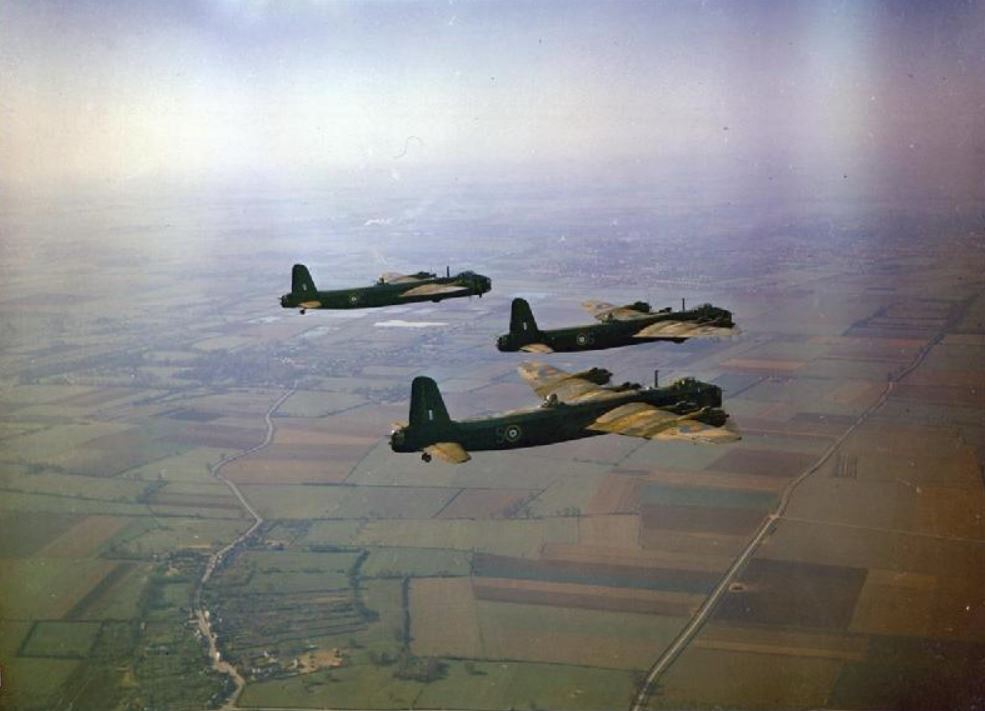Difference between revisions of "No. 1651 Conversion Unit RAF"
From Our Contribution
(Created page with "{{Infobox | name = No. 1651 Conversion Unit RAF | title = | above = | subheader = | image = [[File:]] | caption = | ima...") |
|||
| Line 5: | Line 5: | ||
| subheader = | | subheader = | ||
| − | | image = [[File:]] | + | | image = [[File:Short_Stirling_2.jpg]] |
| − | | caption = | + | | caption = Short Stirlings of 1651 CU. Cambridge at top of photo |
| image2 = | | image2 = | ||
| caption2 = | | caption2 = | ||
Revision as of 20:17, 15 July 2020
 Short Stirlings of 1651 CU. Cambridge at top of photo | |
Contents
Brief History
Formed on 2 Jan 1942 by merging No. 26 Conversion Flight RAF and No. 106 Conversion Flight RAF at RAAF Waterbeach, north of Cambridge. The role of 1651 Conversion Unit was to convert 30 - 40 newly-trained crews from Operational Training Units per month onto the type of aircraft they would fly on operations. Weather was a major factor in whether this target was achieved or not. During 1942 the unit flew 49 Operational sorties for RAF Bomber Command, with the loss of five aircraft.
In November 1943, after a lengthy period at RAF Waterbeach 1651 Heavy Conversion Unit made way for a Lancaster Squadron, and moved to RAAF Watling Common near Newmarket, in Suffolk. There they found that the accommodation provided for ground instruction was better than at Waterbeach. By late 1944, the Stirling had become obsolescent, and 1651 COnversion Unit was re designated as No. 1651 Heavy Conversion Unit and re-equipped with Lancasters. As Watting Common was required for an operational Squadron once more, 1651 CU was ordered to move to Woolfox Lodge in Rutland, and to leave their Stirlings behind for disposal. The Unit was operational at Woolfox Lodge on 9 Nov 1944. It was disbanded in December 1945.
11 Australian airmen lost their lives while serving with this unit.
Trainees
- Billy Kendall Collins September 1942
Battle Honours
Individual Honours
Notes